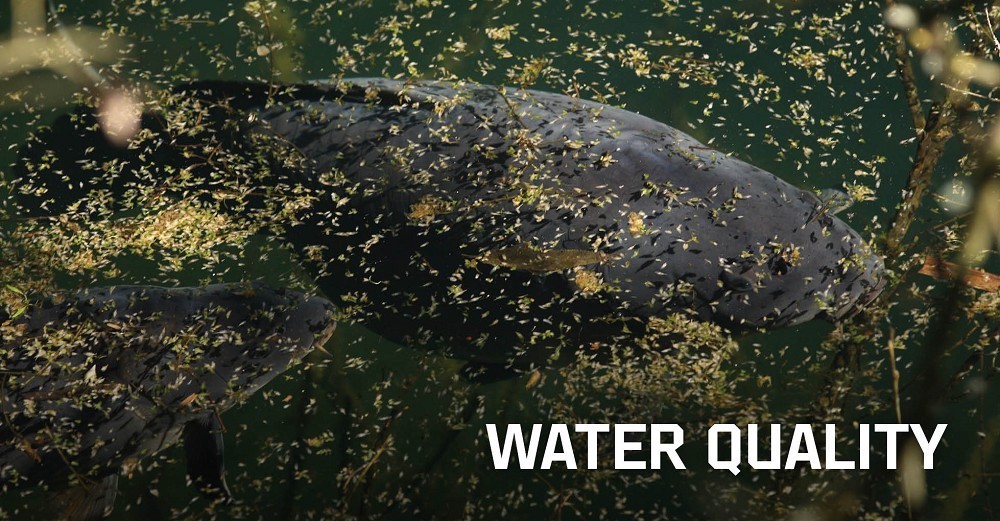
Is the seven-year cycle utter make-believe?
We ask Terry Hearn for his thoughts...
Question: Is the seven-year cycle utter make-believe? I’ve heard the same thing mentioned time and time again but I am not certain on what basis it is proposed. There are certainly years when natural food peaks and others when it declines – based largely on available nutrients and the base line of whether the conditions were right for that animal to breed profusely – so it seems reasonable that the same would apply to the growth and development of weed as well.
Whether that is cyclic (the analogy being a fallow field) or just related to annual rainfall, sunlight, the runoff of rainwater, mean temperatures I don’t know – but I’d like to know more…
Water quality is of paramount importance to the future of the sport, with careful management of the waters we fish being critical to maximising the potential of these waters. It seems that the smaller the water the more important this is done with great care and consideration but I despair at the trend for much of the advice to end in the ‘deforestation’ of lakes! Surely a conservation-minded approach that creates a well-balanced habitat with a carefully calculated stock density and the use of Hydrolyzed Lime (Siltex) is a better way to manage these lovely intimate waters! Rather than ravaging the bankside habitat that encourages birds and enhances the whole lakeside world why not do something positive – constructive rather than destructive.
Has anyone else despaired at acts of bankside vandalism? A lake is an ecosystem that includes so much more than the bit under the water, and should be treated as such. Perhaps by doing so we would find stronger support form an increasingly environmentally aware public.
I only roughly recall the seven-year cycle thing. Wasn’t it meant to be six years of heavy growth followed by one poor year, or maybe it was the other way round? I honestly can’t remember, which shows how much notice I’ve taken of it, but then again I’ve never fished the same water for seven years on the bounce. Either way, I think weed growth is going to be largely dependent on the amount of nutrients present, and from what I’m seeing at a lot of waters, they’re getting weedier and weedier. It’s not something I’m that clued up on, but I’ve read a bit here and there and seen suggestions that it’s down to an increase in the use of fertilisers on the farmer’s fields, which are making their way into our waters via run-off.
I read one article which was talking about algae, and it showed aerial images of it spreading out of a harbour and into the sea, previously unheard of. Again, increased fertiliser use was given as the reason. With that in mind, maybe it would make sense to imagine a weedier summer after a particularly wet winter, when there would have been plenty of run off from farmers’ fields.
I’m with you on the water quality thing, Lew, to my mind it’s the most influential thing of all. Although, like yourself, I love to see a nice, little, wooded pool, surrounded by dense foliage and tall trees, I’ve seen how much of a detrimental effect allowing a water like that to become too overgrown can have. I hate seeing trees and foliage chopped, but some waters can benefit greatly by having even just a bit of breeze blowing across them, and so sometimes drastic measures are needed, even if it means the loss of one or two trees.
As for bankside vandalism, mate, I get wound up by the smallest little things in that regard, that’s why I love fishing places with little footfall. It matters to me, not just for the fishing but for everything else that goes with it. That lovely patch of moss growing to one side of the swim, which I’ve noticed looking lusher with every trip, and I’ve taken great care not to step on. The reeds sprouting to the other side of the swim, which I’ve watched getting taller with every sunny day. Those freshly budding branches slightly hindering my cast, which although a little annoying, I still left well alone. And the long tailed tits nest behind the swim, so well camouflaged it looked like part of the lichen-covered trunk that it’s bound to. I’m only aware it’s there because I watched them building it.
Another type of angler drops into the swim and it’s all change, invaded. The lovely mossy patch is scuffed and trampled, its beauty having gone unnoticed. The reeds are now carelessly draped in ‘marker float weed’ blowing in the wind, dry, discoloured and unsightly. The freshly budding branches have been broken, not cleanly cut, but snapped and twisted, left hanging and withering, and the long tailed tits nest is deserted. When it’s like that I don’t want to be there anymore.



